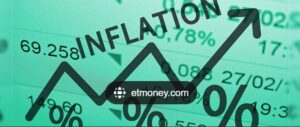INDIAN ECONOMIC DEVELOPMENT- FOREIGN TRADE-DEMOGRAPHIC PROFILE.2023
Foreign Trade...
1) Net exported of Raw Material and importer of finished goods :-
- During the British rule, India become net exporter of primary products like raw silk, jute, wool, indigo, sugar, cotton etc.
- On the other hand, it became importer of finished goods produced by the British industry (cotton, silk and woollen clothes and capital goods)
2) Monopoly control of India’s foreign trade :-
- More than 50% of India’s foreign trade was taking place with great Britain. The rest of trade was directed towards china, Sri lanka and iran.
- India was a huge market to the British Industry.
- Exports and imports were largely restricted to be between India and Britain.
3) Surplus trade but only to Benefit the British :-
- Surplus was due to export of primary goods not the industrial goods.
- Despite this surplus trade, several efficient commodities like Foodgrains and clothes were deficient in the domestic economy.
- Trade surplus was not used for growth and development of the country. it was used for meeting administrative expenses of the British government and expenses of wars fought by the British government.
- It led to drain of India’s wealth.
Suez Canal…
- Opening of Suez canal in November 1869 significantly reduce the cost of transportation of goods beetwen Britain and India.
- It promoted monopoly control of India’s foreign trade by the British Gov.
Demographic Profile…
Demographic profile during the British rule showed all features of a backward and stagnant economy.
- High Birth rate and Death rate :- Birth rate and death rate are very high nearly 48 and 40 per thousand. High birth rate and death rate cause a state of poverty in the country.
- Infant Mortality Rate :- Death rate of children below the age of one year per 1000 live births is known as Infant Mortality rate. Infant mortality rate was very high. It was about 218 per thousand, while at present it is 33 per 1000.
- Life Expectancy :- Life expectancy (average life of a person) was very low. It was 32 years only. Low life expectancy reflects lack of healthcare facilities, lack of awareness. Currently it is 69 years.
- Literacy Rate :- Literacy rate was less than 16%, reflecting social backwardness and economic backwardness. Female literacy rate was only 7% which indicated gender-bias.
Demographic Transition.
- In the history of demographic transition, year 1921 is regarded as ‘year of great divide’.
- Before year 1921, population growth of India was never consistent. It kept fluctuating, increasing in one census and decreasing in the other.
- After 1921, population of India never decreased. It is consistently rising.
- Census 1901 showed a decline of 0.04 crore in total population.
- Census 1911 showed a rise of 1.38 crore in total population.
- Again census 1921 showed a decline of 0.07 crore in total population.
- But after year 1921, total population of India never declines. It showed a consistent rise only.
- Rising population creates a burden on maintenance investment.
- When the maintenance investment is high, growth-oriented investment remains low.
- High maintenance investment and low growth-oriented investment is a sign of backwardness and stagnation.

